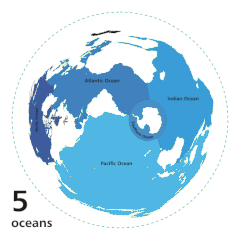 The 27 participants from 18 organisations in 6 countries produced a grave assessment of current threats — and a stark conclusion about future risks to marine and human life if the current trajectory of damage continues: that the world's ocean is at high risk of entering a phase of extinction of marine species unprecedented in human history.
The 27 participants from 18 organisations in 6 countries produced a grave assessment of current threats — and a stark conclusion about future risks to marine and human life if the current trajectory of damage continues: that the world's ocean is at high risk of entering a phase of extinction of marine species unprecedented in human history.
Delegates called for urgent and unequivocal action to halt further declines in ocean health.
The report summary (released 21 June 2011) outlines the main findings and recommendations. The full report will be released at a later date.
The report is also accompanied by four case studies, which look in more detail at some of the workshop's main findings.
Case Study 1: The potentially deadly trio of factors — warming, acidification and anoxia — affecting today's oceans, by Professor Jelle Bijma, Marine Biogeosciences, Alfred Wegener Institute for Polar and Marine Research. Watch his explanation, beginning with the growing problem of anoxia, or dead zones, in the ocean.
In Brief: Most, if not all, of the five global mass extinctions in Earth's history carry the fingerprints of the main symptoms of global carbon perturbations (global warming, ocean acidification and anoxia or lack of oxygen; e.g. Veron, 2008).
It is these three factors — the 'deadly trio' — which are present in the ocean today. In fact, the current carbon perturbation is unprecedented in the Earth's history because of the high rate and speed of change. Acidification is occurring faster than in the past 55 million years, and with the added man-made stressors of overfishing and pollution, undermining ocean resilience.





 A powerful atmospheric river storm was set to wallop California on Wednesday evening, drenching large swaths...
A powerful atmospheric river storm was set to wallop California on Wednesday evening, drenching large swaths... Quick-moving brush fires burned through a large swath of land on New York’s Long Island on...
Quick-moving brush fires burned through a large swath of land on New York’s Long Island on...






























